|
Projects since Michigan have been all day and night with no opportunities for photos. But saw this young coyote today and put down all the gear I was carrying to get the camera out. It was poking around the wetland in the foreground, but heard me when I set down a big bag of aluminum poles and started up the road. Disappeared in the weeds right after I took this pic.
0 Comments
The thumb of Michigan is dominated by a landscape of farms and woodlots. This mix is just about the perfect situation for white-tailed deer, and they are super abundant in this area. Spending a day driving the many grid roads assures one of seeing many of them.
But mostly they live in the woodlots, and that is mostly where I have been spending my time lately. So seeing a dozen or more in a few hours is typical. Interestingly, there are many does, and while walking around have discovered many fawns lying perfectly still on the ground, but very few bucks. The trails through the woodlots tend to be grassy, some mowed and some just high grass. When they are high grass, the deer don't know I'm walking there until I am fairly close and they hop up to see what is coming. So I see, over and over, essentially this. A couple days ago I was walking down a fence line. I was on the cow side of the fence and the river was on the other side. I always appreciate it when ranchers keep their cows out of the creeks.
So I came over a little rise and saw a big raccoon hightail it away as soon as she saw me. Didn't think much of it as we see them all the time. But when I walked past where she was I got a good display from this baby raccoon. There were two of them, which apparently didn't get the memo to flee when mom took off, but this one was really giving it a go with his defensive posture. The first thing was a hissing/growly kind of noise that certainly gives one a bit of a start when suddenly coming from a few feet away from your boots. Then it arched its back high and raised all the fur on its back making it seem much larger and more dangerous than it was. The second baby buggered off pretty quickly, but this one stood his ground letting me get within maybe three feet before deciding I really was bigger than he was and that it was time to run. Had a little extra time today so went for a trail walk at the nearby arboretum. While at the overlook this red fox wandered by and seemingly didn't notice me at all. Fox here are seemingly quite common and always happy to see them.
A short walk around Lake Accotink in northern Virginia was quite enjoyable, with many gray squirrels out and about getting ready for winter.
After finishing up all our work with the bat and sea caves in the southwest of Costa Rica, we spent our last night in that region back at the Firestone Center. Not the least of the reasons was for access to a washer and dryer, as another day and you'd know we were coming before we entered the room and know we had been there long after we left. So here are a few more photos from the Firestone. The first is an interesting scene on a leaf. This blue morpho (Morpho sp.) was patrolling a trail when I saw it and I was able to follow it until it landed. And when it landed the leaf was occupied by obvious predators of butterflies, harvestmen. But I think in this case the butterfly would be just a little on the large size for these guys to go after. Side note, the species of this butterfly is likely Morpho Menelaus, but the pattern is quite similar to Morpho didius which I do not believe to be found in Costa Rica. Anyway, when they close their wings the blue disappears and they have the brown with eye spots pattern on the ventral side of the wings. At the Firestone Center we have a lot of peccary. They are notoriously near-sighted and even when pretty close can't seem to discern exactly what is going on unless you wave your arms or something. But they also have a reputation for being grumpy leaning toward aggressive when you get too close. I saw these collared peccary along the trail and they just kept getting closer and even when I was moving they just kind of shook their heads and didn't run off. I took a photo and then took a little detour around them lest I get chased up a tree or something else less than heroic. At night, I had to go into the forest to check on the mosquito trap. It was hanging in a tree down by the Rio Cacao and pretty close to the Ecology Center. On my way there, I spotted this Northern cat-eyed snake on the ground in the yard outside the Ecology Center. They are fairly thin snakes, but when I got close it puffed itself up to probably more than twice its normal width. And while not a dangerous snake, they are rear fanged and do have a venom, but even so you can pretty much pick them up and move them out of the way if needed. Of note, this image looks a little odd since it was taken with the wide angle lens I had on my camera to photograph the mosquito trap. I was only a few inches from the snake taking the pictures, which gives it an unusual look. And finally, one of the things we have been working on at the Firestone Center is to figure out what mosquitoes we have and which species are in which habitats. This has been a struggle as catching them in homemade traps hasn't been very successful.
Here you see the latest model of the Dynatrap, a neat little thing that was a light and a fan (sucking inward) to attract and suck in mosquitoes. The old model had to be plugged into an outlet, which unsurprisingly are not readily available out in the jungle. This model was designed to work with an external battery, and early results are quite promising that this will be our go-to mosquito catcher in the future. So for our last night at Campanario, Guy and I decided to just head over to the spot above the cave with the benches and watch the bat flight. This is just a really nice way to have a great wildlife experience while the sun goes down and darkness arrives. Birds stop calling and frogs start up. Day insects find a hidey hole and the night insects come out. And the bats wake up and fly out of the cave. Okay, I gotta say here that "bats wake up" is a bit of a mystery to me. I have been in hundreds of tropical bat caves and at any point, with lights out and even before they know I'm nearby, they always seem to be awake. Cave bat colonies are never quiet and sometime really quite loud. You can turn your light off and sneak up on them from a long ways off with a dim red light and still hear them making a racket three turns of the cave passage before you get there. Makes me wonder if the bats ever actually sleep. Okay, back to the cave. Earlier, we had seen a black hawk sitting on a downed tree with bats flying by trying to score a late evening snack. I never got a photo of it going after a bat but it clearly wanted one. So as it was getting pretty dark, with just a hint of yellow-orange in the clouds out on the ocean horizon, I took one last Campanario Bat Cave Photo. I end this set of blog posts with a Pteronotus flying out from the cave and passing between me and the ocean. A flash went off in the night, and Guy and I headed back to the Station.
While at Campanario I saw white-face capuchins and howler monkeys (which of course were also heard howling). But this sleepy monkey was high in a tree and at the time I wasn't able to hang around and hope for a better look at it. So while Don asserts with British certitude that it is a howler, it sure looks like it only has 4 fingers which would make it a spider monkey. So, here is one to guess at.
We have just returned from Campanario Biological Station in southwestern Costa Rica. One extremely nice place to stay and study things run by the most amazing Nancy Aitken. I want to thank Nancy right up front for all the hospitality and help with our bat cave work and making the whole trip work out so well. And as a side note, the food is so good there that as a caver one might start to worry about adding a few pounds and not fitting through everything they used to if you stay too long. I can't write a whole description of the place, but you may visit their website to learn more about this field station https://www.campanario.org/ We took a boat out of Sierpe, down through the mangroves along the river, and out into the Pacific ocean. Bit of rough water right where the river meets the sea, but our boat captain circled until he saw a gap in the wave pattern and got us through with minimal bashing about. Kudos to him, as he really knows how to read the water. At Campanario it is a wet landing, as in there is no dock they just back the boat up to the black sand beach and you jump out. Mostly all this is stuff chucked on your shoulder or hand carried to dry ground. For some reason Don seems to have thought this was a luxury tourist resort and, well, ended up trawling his wheeled luggage across the sand. The Station itself I can not do justice to in a photo. It maintains a small footprint with maximum usefulness, so pretty unassuming when seen from the beach. But oh yeah, they've got it all worked out very nicely and working here was super easy. And did I mention that the food was amazing? And it didn't take long to see some wildlife. This red-tailed squirrel was bopping around in the trees beside the Station and cute as can be. Things were now in place to spend a couple days figuring out the nearby bat cave and hiking some trails to see some wildlife. My internet has been pretty iffy but that squirrel photo looks great in my files but terrible here to me. I'll check and upload it again later.
Australia loves its bats, and it has some good ones. But after the beautiful flying foxes, what bat would one put on a coin? How about the Ghost Bat (Macroderma gigas). This bat is carnivorous, and like many such bats gets the nickname the False Vampire Bat, with the emphasis on "false." These are cave bats, mostly found in northern Australia, and are a bit ghostly looking. They are gray on the top, and white on the bottom so there is that. But, they are actually called ghost bats because they have very thin wing membranes which give them a bit of a ghost-like appearance during flight. The coin itself is quite the thing. With opal being a national treasure of Australia, they set about designing an entire set of coins using opal inlays. There are quite a number of animals in the series, such as kangaroos and pythons and the like, but in 2015 they gave the ghost bat the opal treatment. So here it is. A 2015 Australia $1 PROOF 99.9% silver coin with a ghost bat inlaid with opal. Now that's a very neat-o coin, and fantastically difficult to photograph. The outer rim is silver and in a mirror proof finish, while the center is black with an opal inlay that twinkles colors in the shape of a bat. It will take more than one photo to really show this one. But the coin itself is extremely well-designed. The bat in the center with the black (for night) is surrounded by a set of cave formations (for its habitat), a crescent moon (neat how they show the full moon with only detail on the crescent) to show it is night out, and the southern cross constellation to note it is the southern hemisphere. Exactly what the meaning of those kurrajong flowers is eludes me, but must be something particularly Australian. Oh yeah, and the little 'P' is the mint mark and stand for the Perth Mint, and the other small print says "ghost bat" and 2015 1oz 999 silver. The coin is fully legal tender and could be spent for a dollar, not that that is likely to ever happen. Which bring me to the other side (which is the obverse, and which is the reverse is a bit confusing here). On this side one finds Queen Elizabeth II, surrounded by rays and looking most majestic. And other than the country name, Australia, the coin is simplified down to just the denomination. Elegant actually. But there needs to be a better look at the bat. Not that it was designed to really look exactly like the bat, but to see the inlay better. Which was another photographic trouble spot. With the lighting needed to get any kind of photo every little tiny mote of dust lit up like a miniature sun and well lots of other stuff. But here is a look at the inlay. Looks quite like a bat! Remarkable job I'd say, and in fact it honestly does look a lot like the ghost bat in most ways. Well done. So, this coin needs some kind of box to package it up and send it in and keep it in. So, they did up an equally nice bit of packaging. The box itself is well-designed with all the elements that are on the coin, and inside it comes with a certificate of authenticity and information about the coin and the bat. Of note, they say that no more than 8,000 of these will be distributed. And finally, FINALLY, I will try and show just exactly how the Perth Mint meant for the coin to be gawked at. See, in that little felt case that actually houses the coin, there is a photo sensor that, when it senses light, turns on a little LED light aimed at the coin. Yeah, really. So you open it up, the light comes on, and the con just absolutely glows brilliantly with all that silver and opal and colors and well, take a look...
|
AuthorKeith Christenson - Wildlife Biologist Categories
All
Author
Keith Christenson Wildlife Biologist Archives
September 2021
|
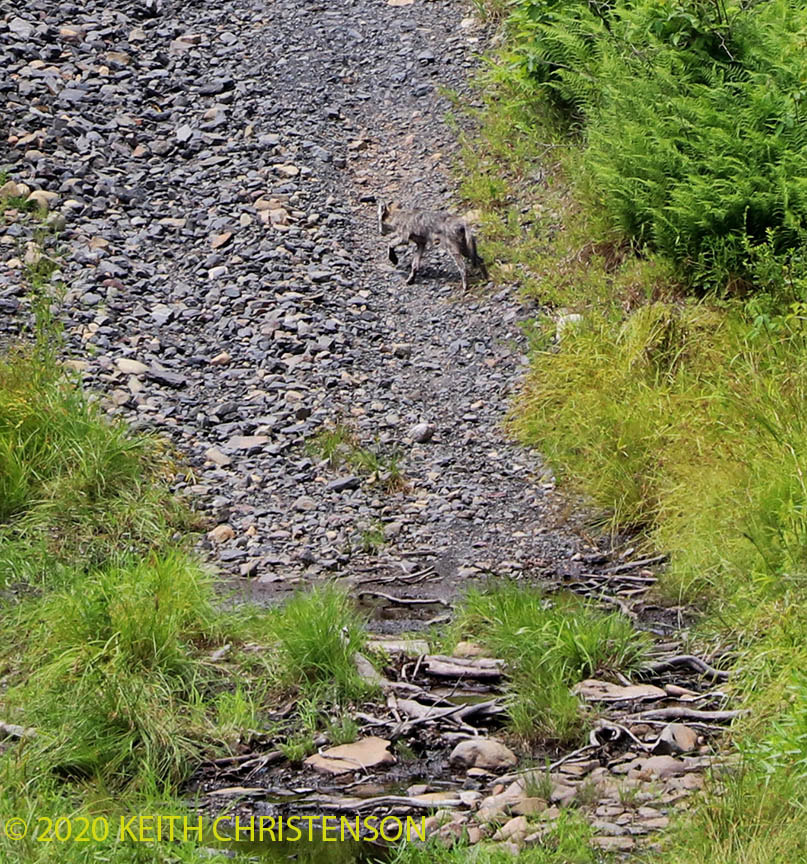
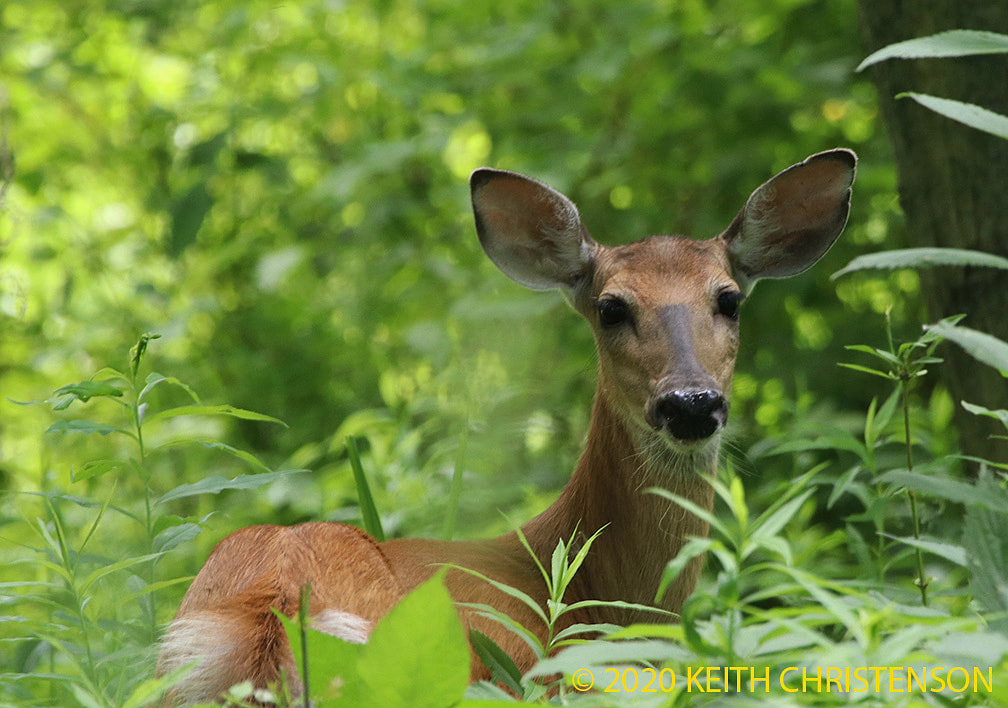
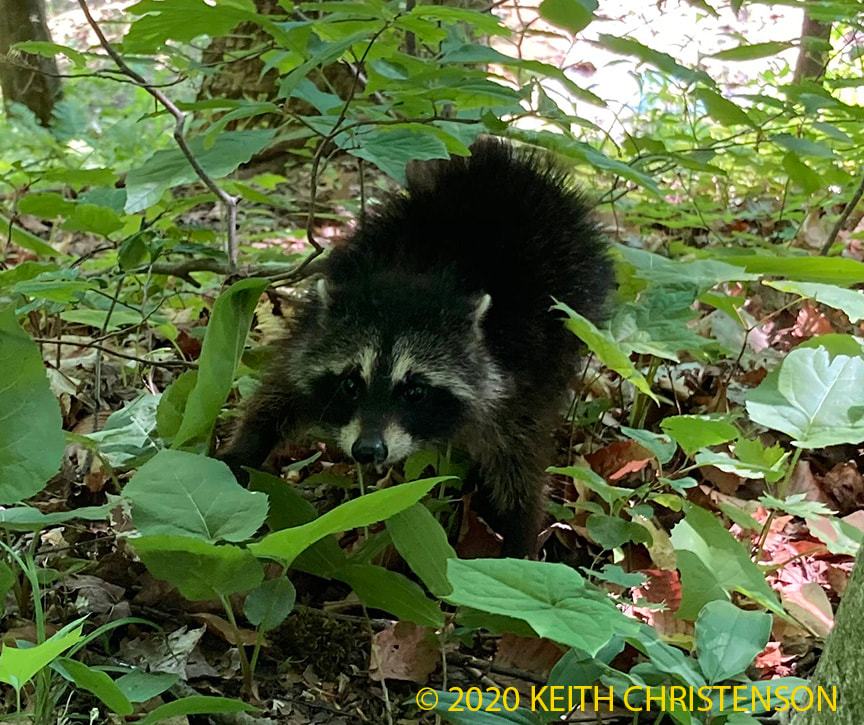
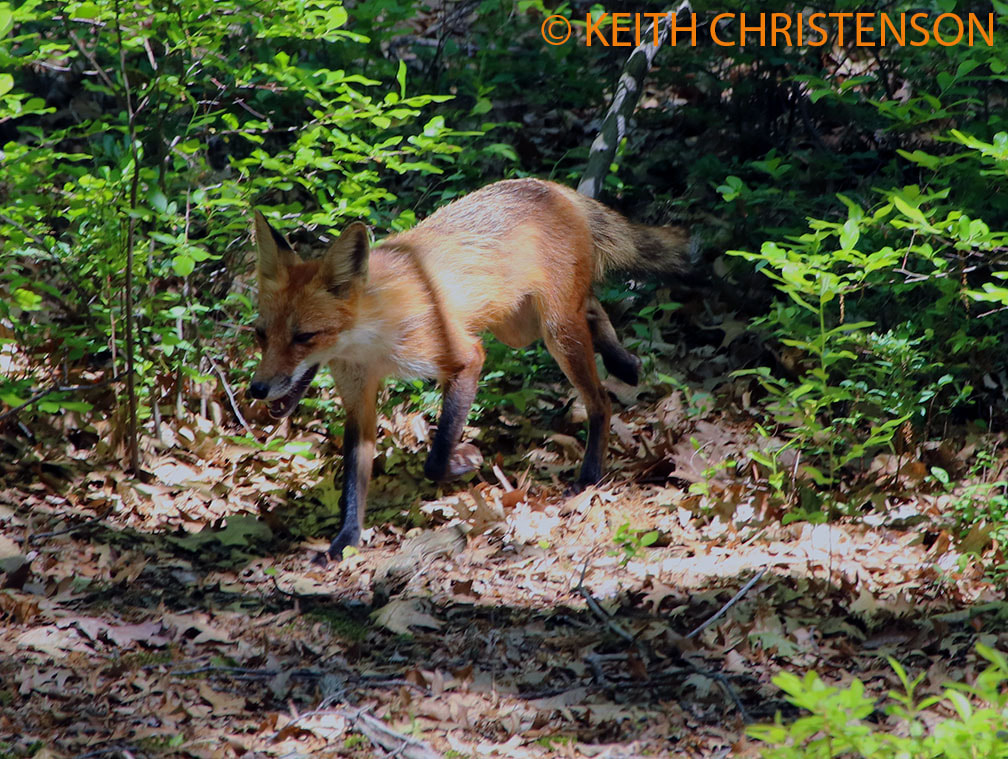
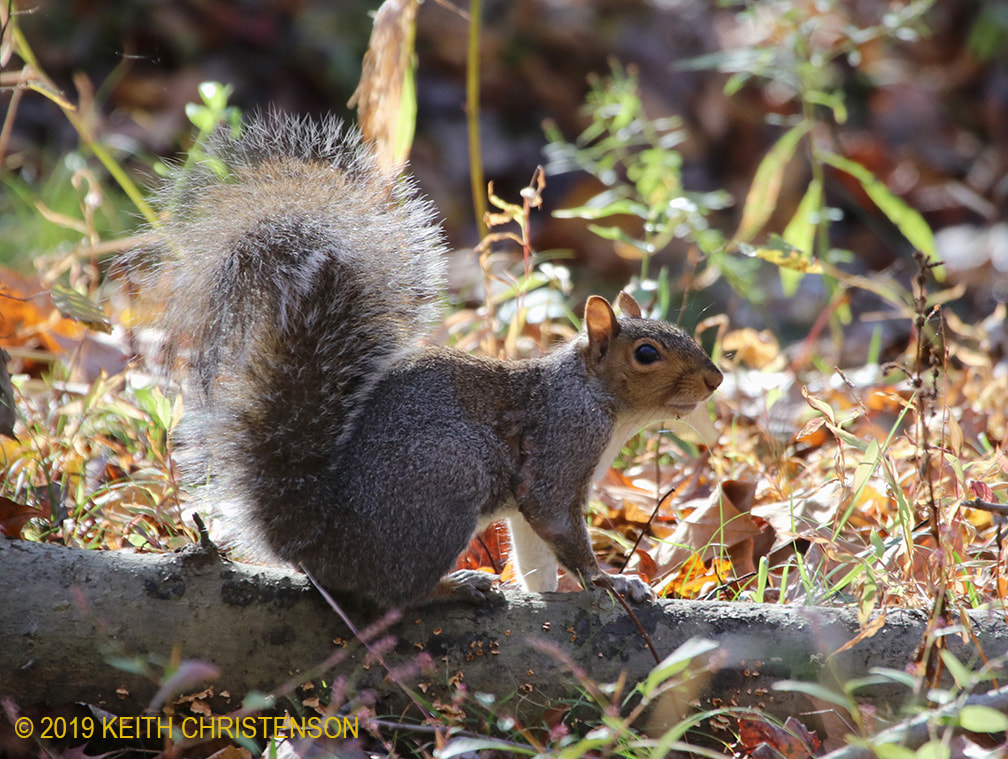
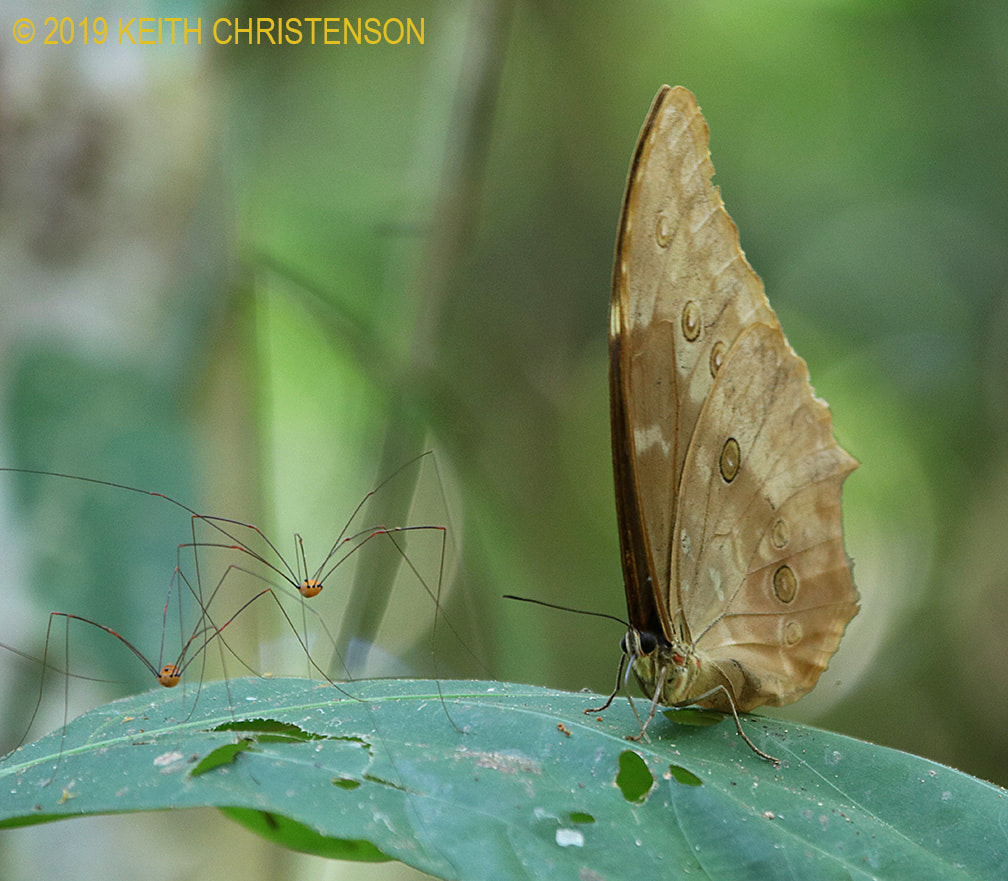
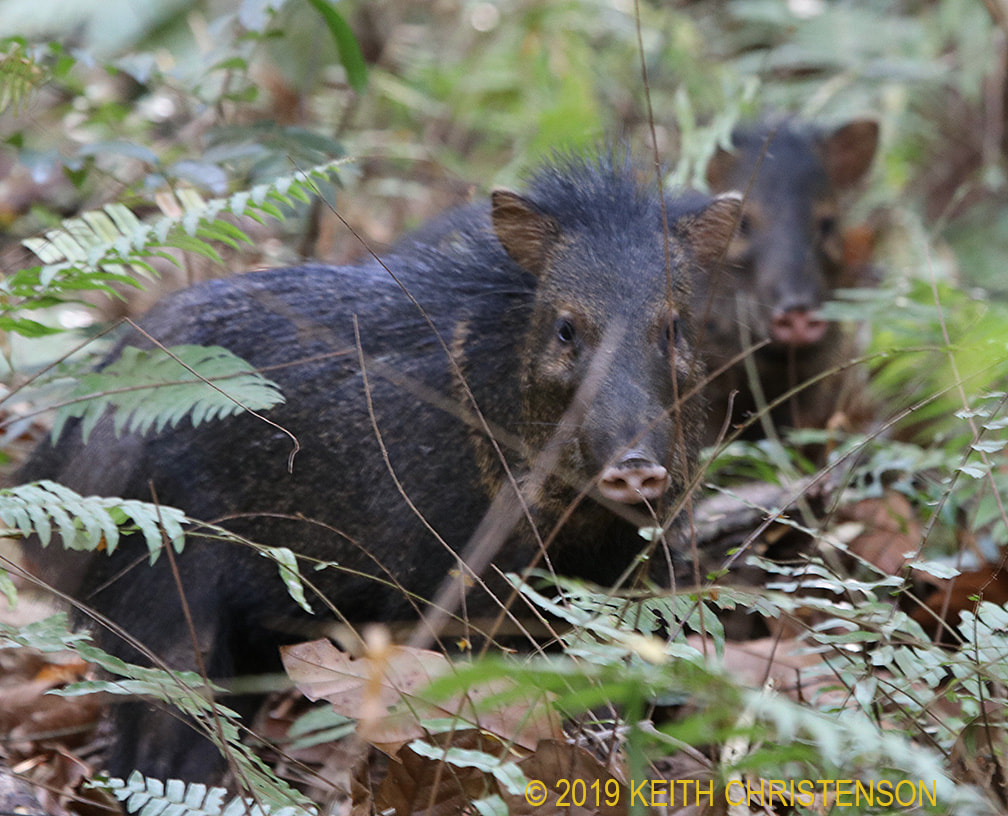
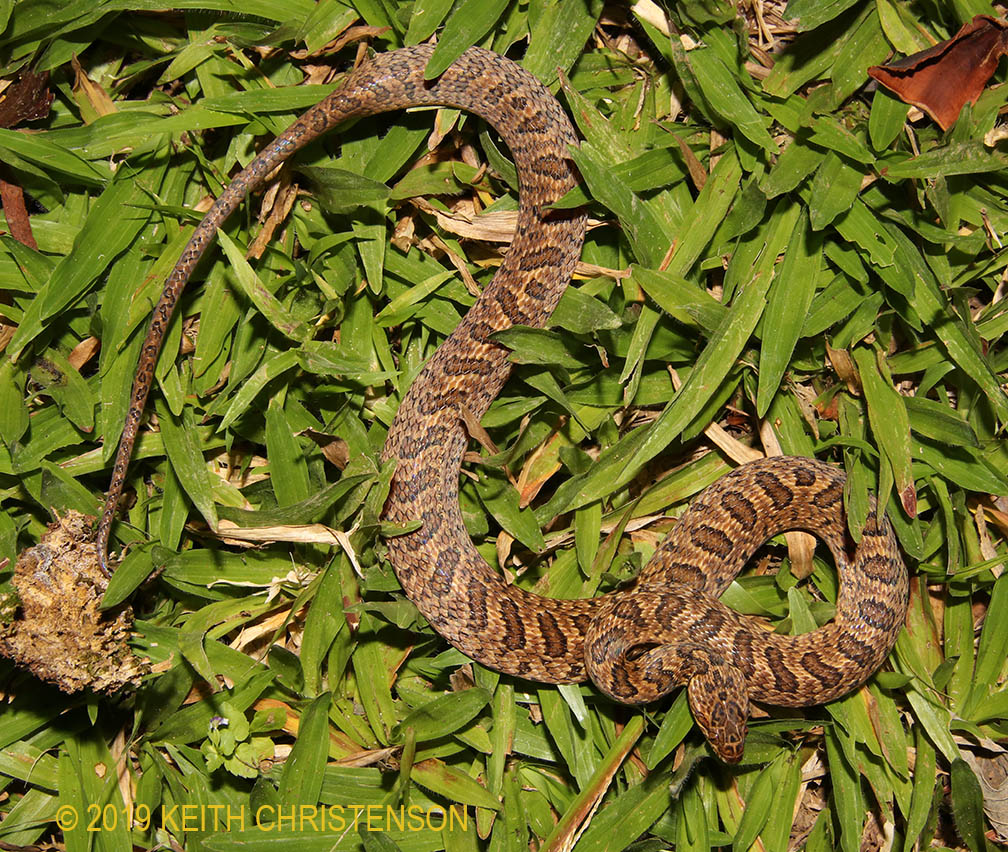

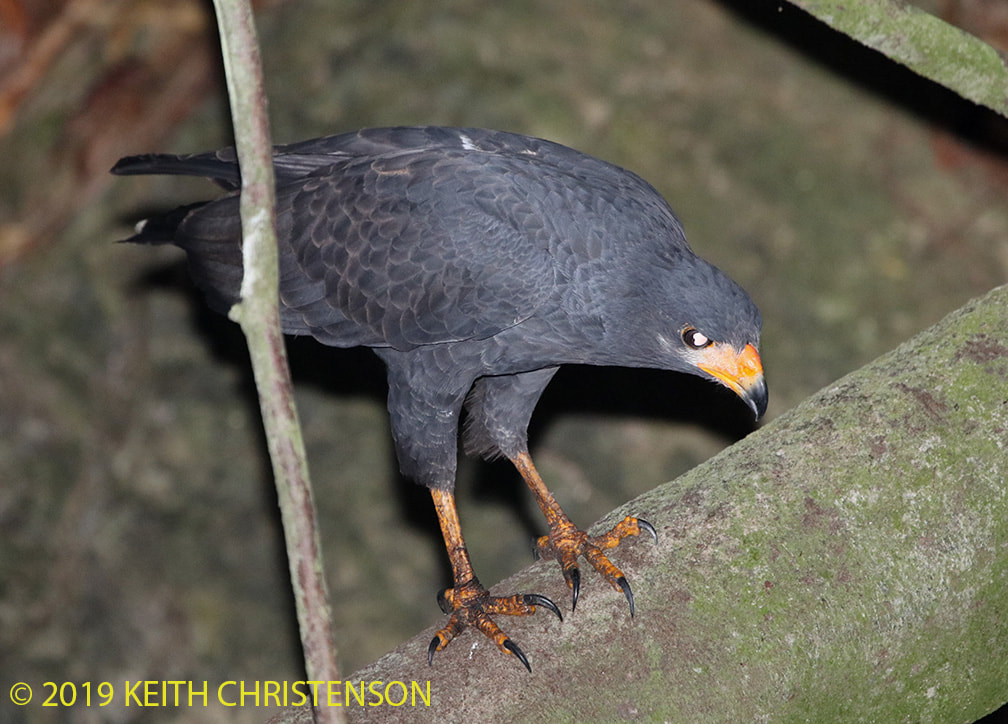
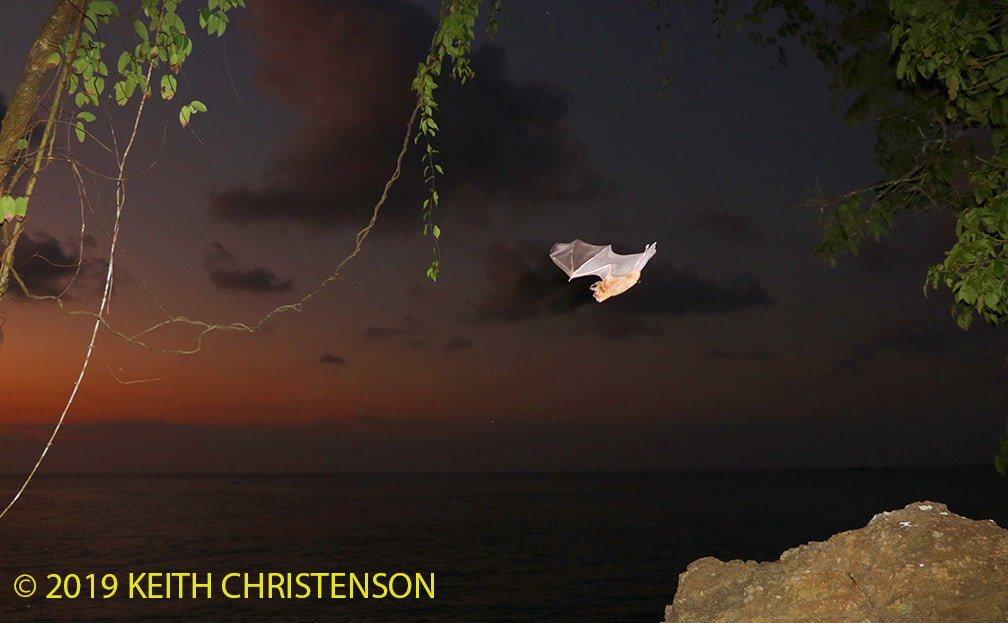
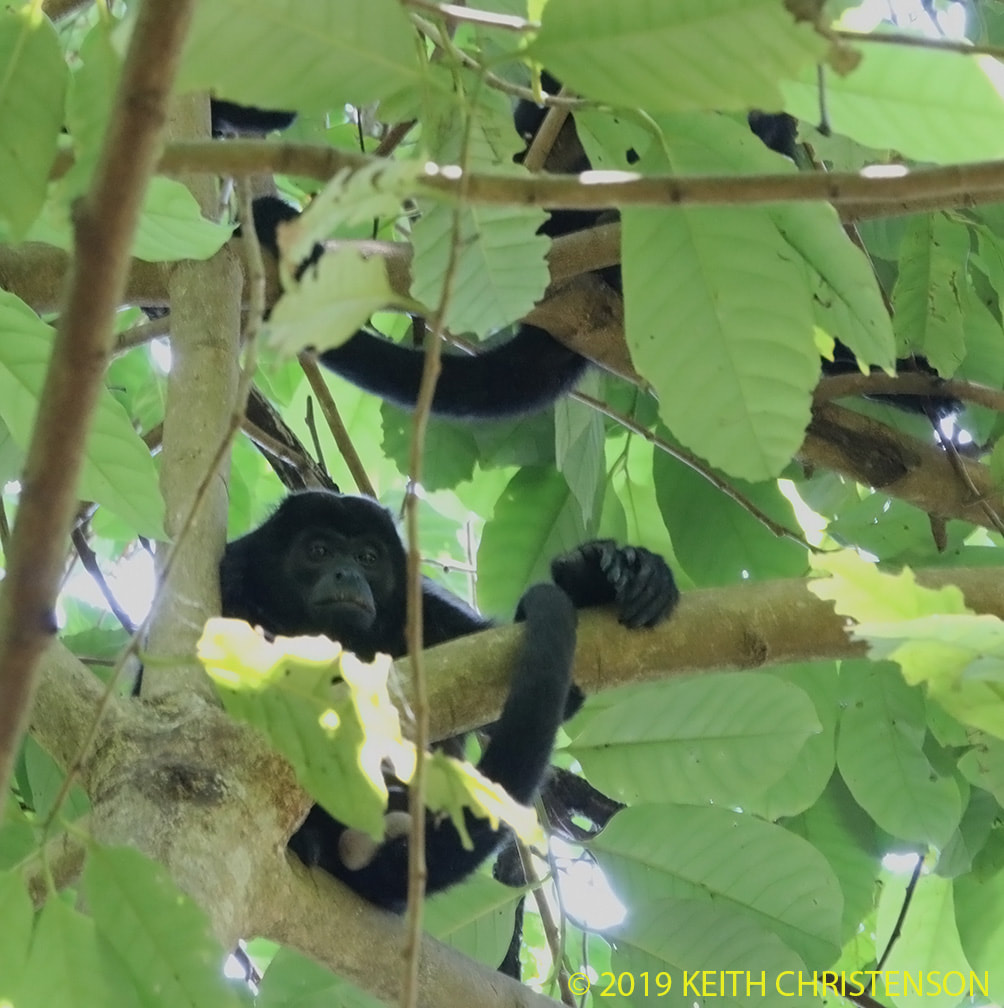
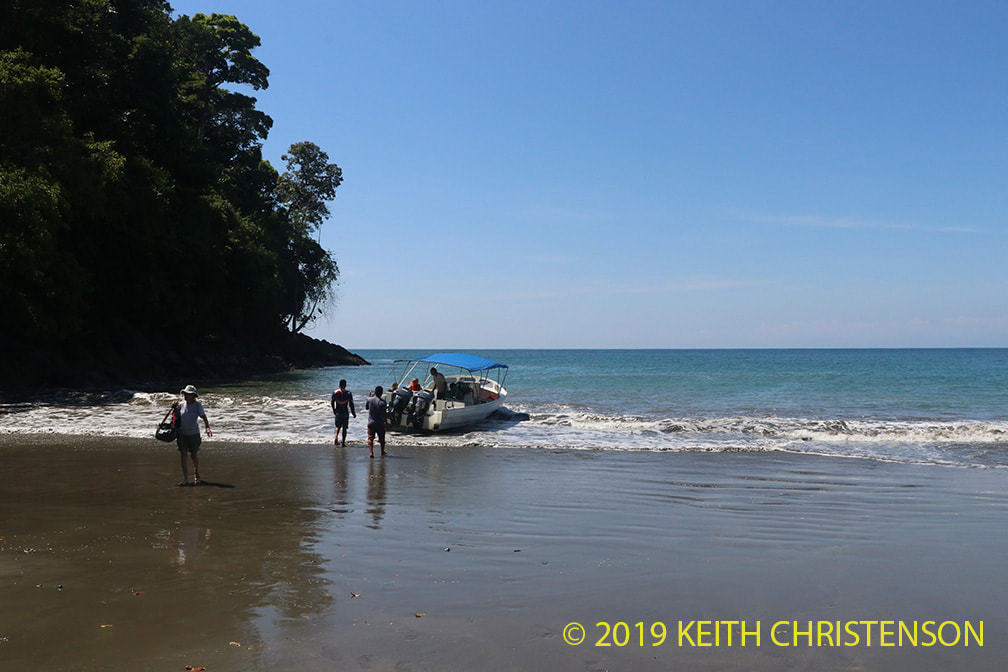
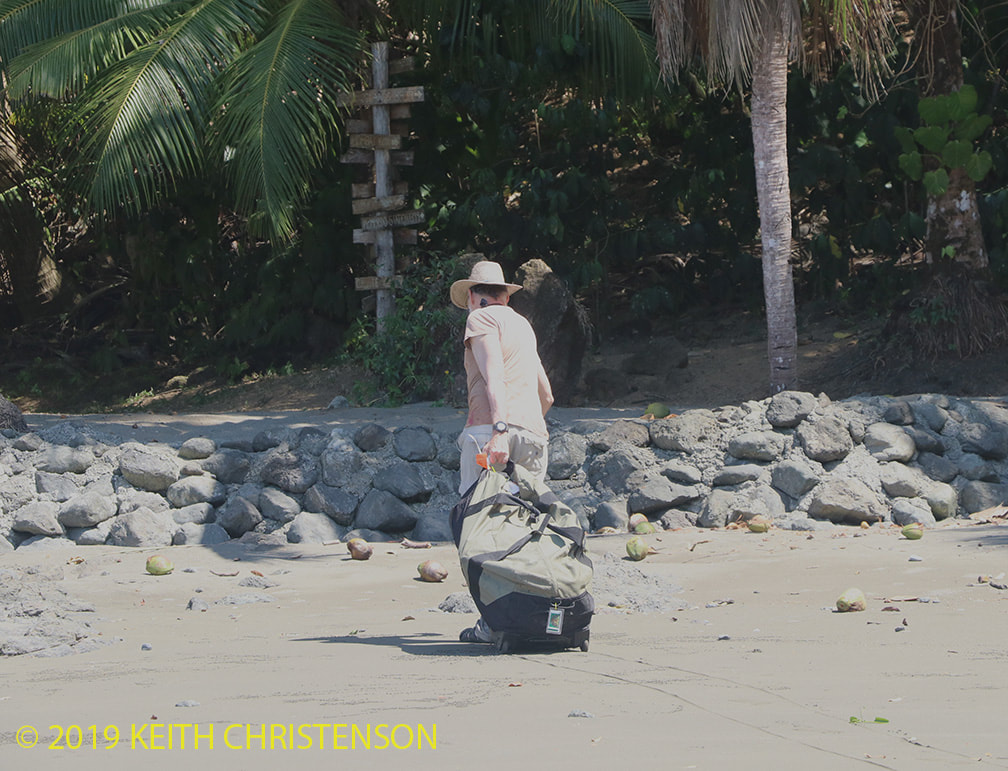
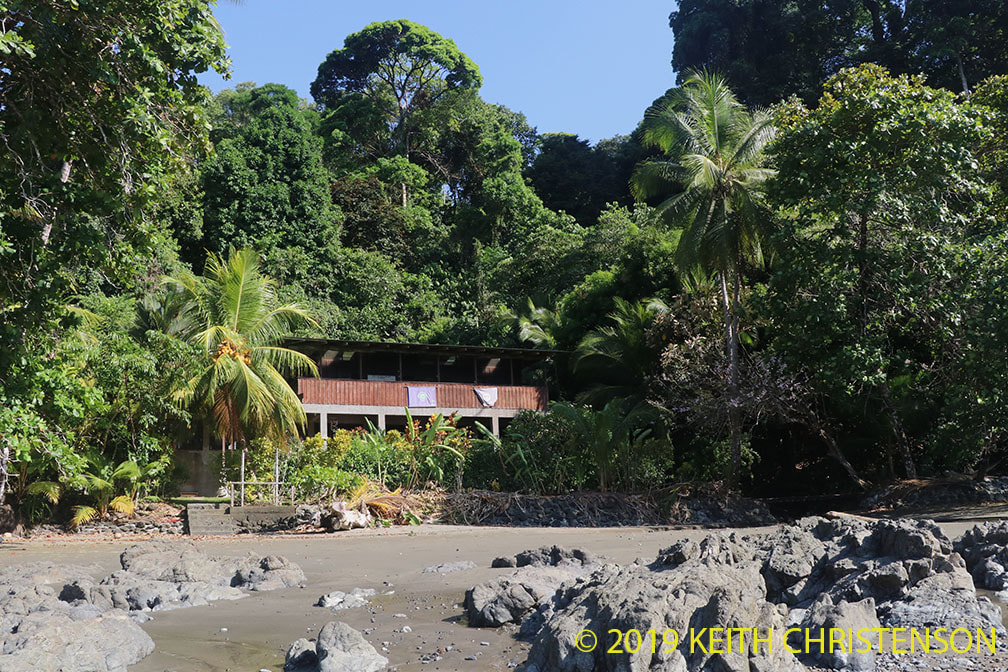
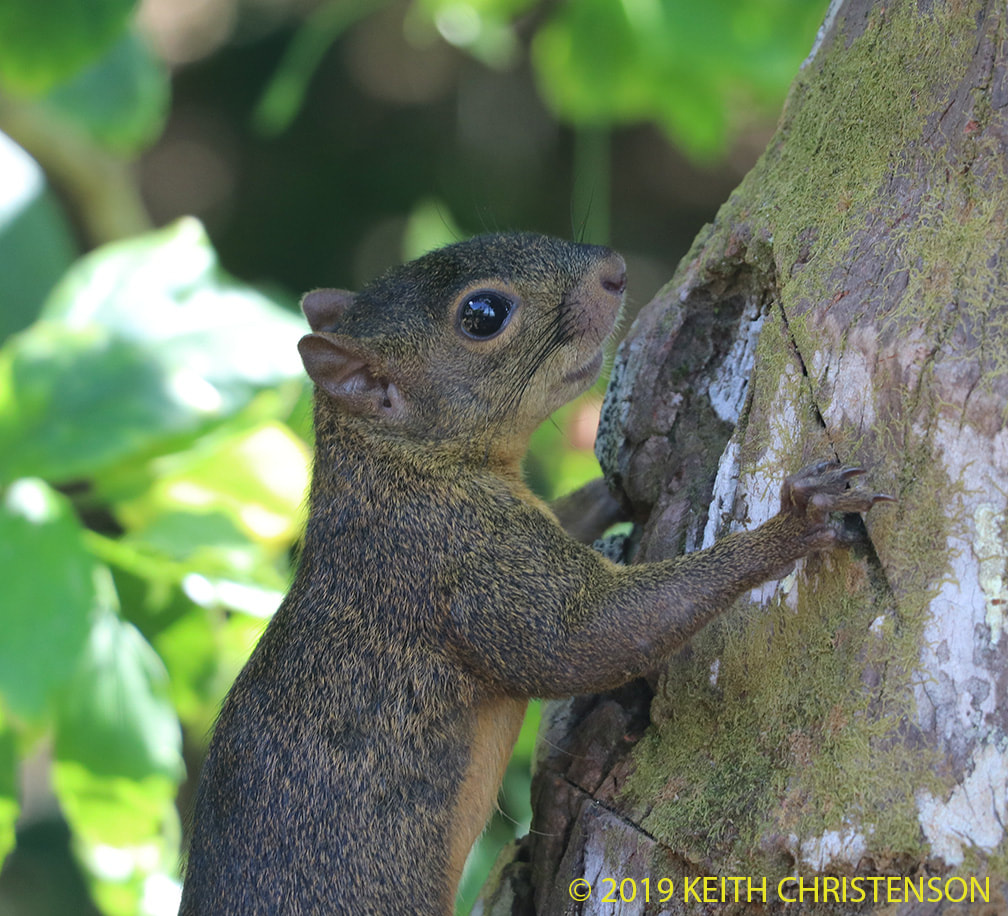
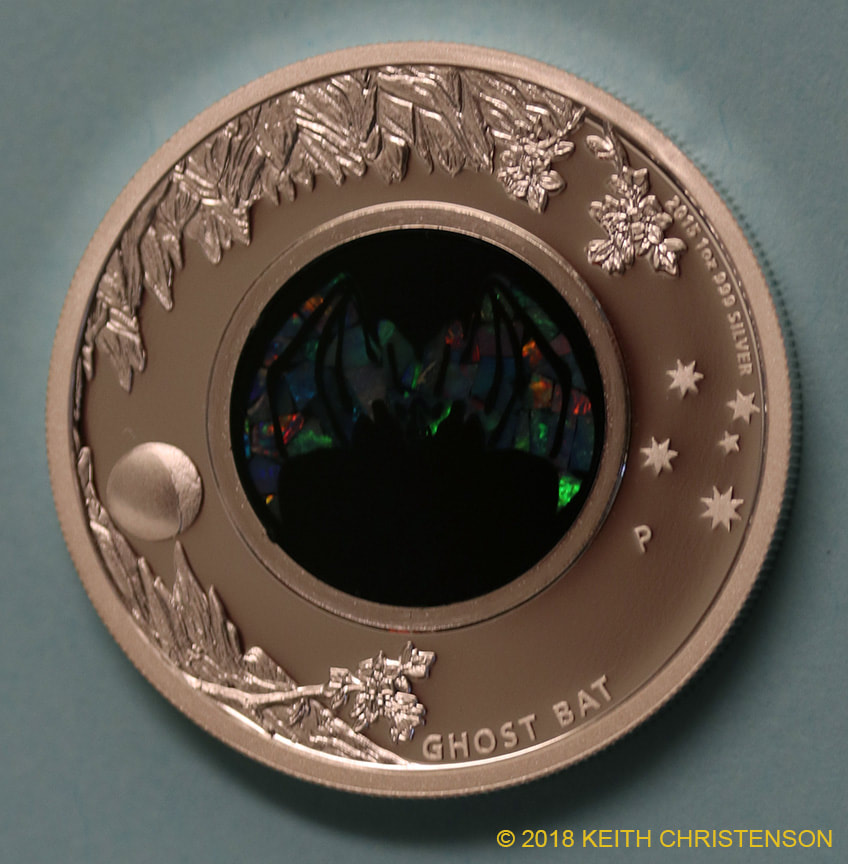

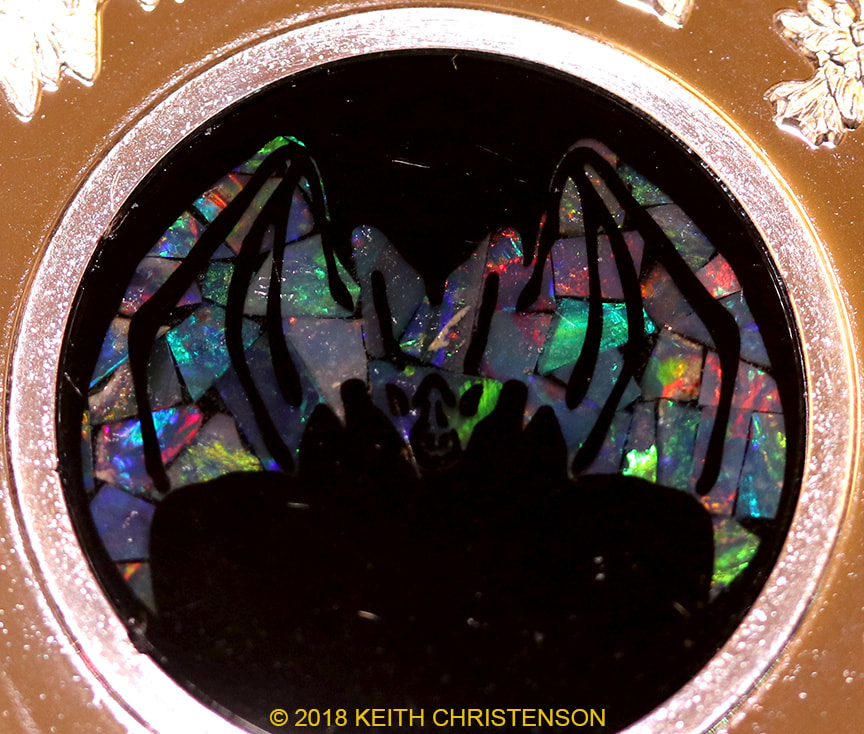
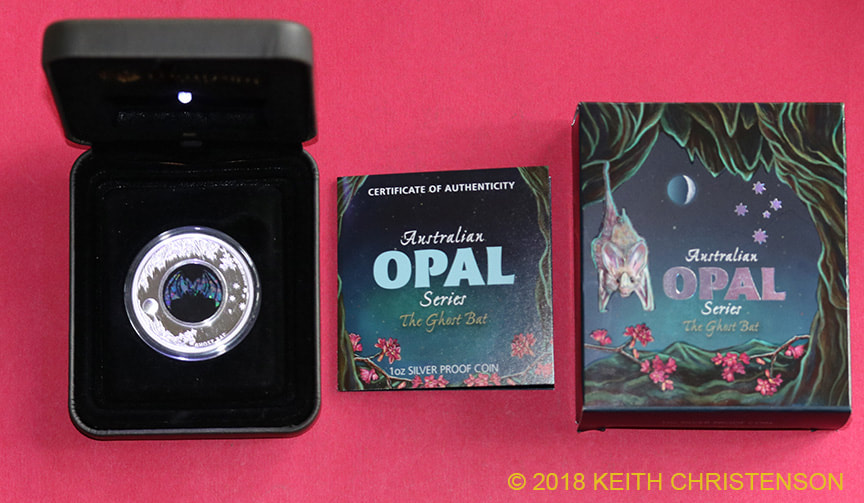


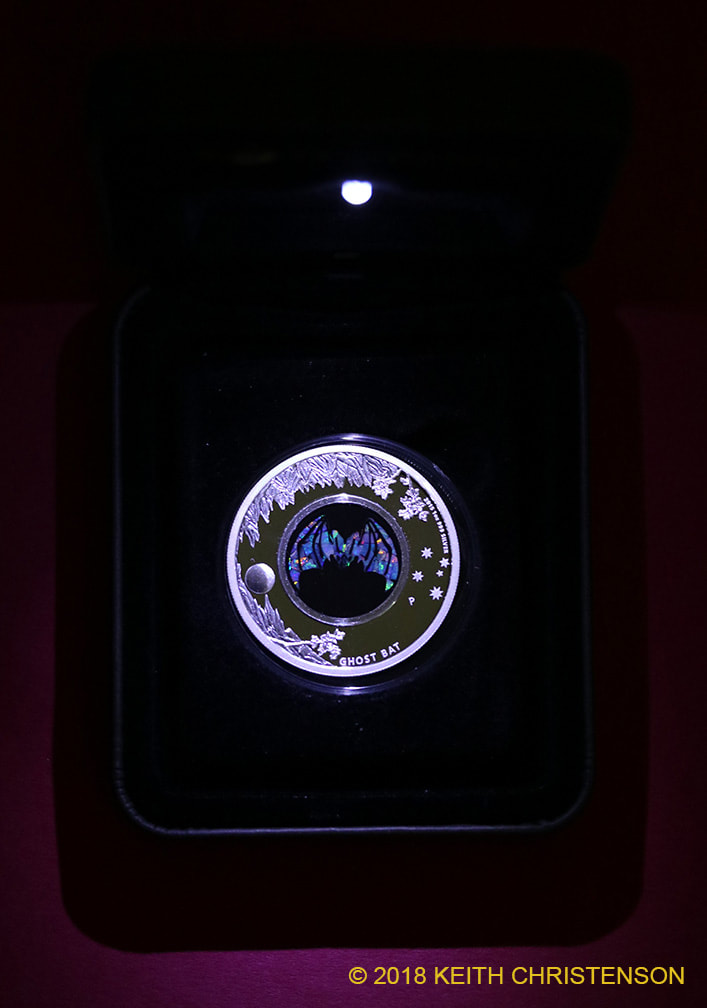
 RSS Feed
RSS Feed